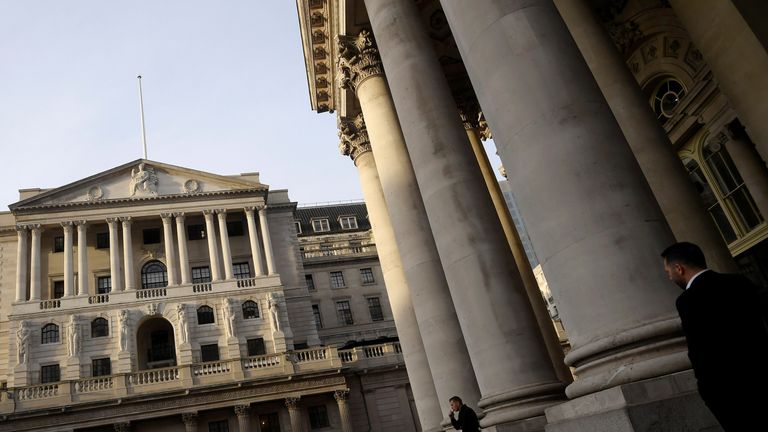Back in the black - but Chancellor wants more belt-tightening
Day-to-day public spending no longer relies on borrowing, but Philip Hammond is resisting pressure to loosen the purse strings.
Tuesday 13 March 2018 05:15, UK
How big is Britain's national debt?
The answer rather depends on what you mean.
Strictly speaking, if you take the entire mountain of debt owed by the Government (which is to say, owed by all of us), it's just passed the £2tn mark.
That's a pretty astonishing figure - more or less the equivalent of every single pound generated by this entire country in a year (in other words 100% of our gross domestic product).
The only problem is, that mountain includes a whole load of things that are only temporarily there.
Most notably, it includes the debt owed by the banks nationalised by the government during the financial crisis.
In fact, technically speaking, the national debt used to be even higher than this.
During the financial crisis, it peaked at about £2.3tn, before the Treasury sold off its shares in Lloyds.
It also includes things that some argue shouldn't be in there.
Every so often, the Office for National Statistics declares that certain activities once thought to reside in the private sector should in fact be classified as part of the public sector: Network Rail; housing associations.
The Office for Budget Responsibility's solution for all this statistical fog is to exclude all the big, (hopefully) temporary stuff such as RBS and look at the national debt as a percentage of GDP - that's a pretty good way of assessing our ability to finance it.
On that basis, the country's debt mountain looks more manageable - about 76% of GDP, or £1.6tn pounds.
Smaller though this is, it's still the highest level since the mid-1960s, a fact that is likely to overshadow the Chancellor's spring statement.
In some senses, this is rather odd, because for the first time in ages, Philip Hammond could afford himself a smile at the dispatch box.
The economy is growing faster than expected this year and next (though it's still a fair bit slower than the rest of the developed world); the budget deficit - that is, the rate at which we are adding to the debt each year - is down to the lowest level since before the crisis.
Indeed, when you subtract investment, the deficit has been entirely eliminated.
In other words, for the first time in a decade and a half, Britain is no longer borrowing to finance its day-to-day spending.
That is a big deal.
One of George Osborne's targets has at last been met, two or three years too late.
The problem, as Mr Hammond will point out, is that it is one thing to have a small deficit, or even a surplus, for a year.
It is another to sustain it for many years.
And that is precisely what the UK will need to do if it is to bring the national debt down to more sustainable levels.
That, he will warn, will take many years, if not decades, of belt-tightening.
But is he right?
The target Mr Hammond is referring to is to try to bring net debt from its current level of 76% of GDP to about 60% of GDP.
Why 60%? The short answer is that there's no especially good reason.
Some studies have suggested that a country's growth rate can suffer beyond this level, though they are far from definitive.
Some point out, quite reasonably, that the higher your debts, the less room you have if a future crisis hits.
But to be blunt, these figures are basically arbitrary.
Before the crisis, the "magic number" was 40% of GDP.
Moreover, some economists point out that in some senses, the UK's sustainable level of debt is well beyond that.
They point out that about a quarter of the Government's debt is now owned by the Bank of England.
They point out that when you adjust for that, the UK's debt level is 66% of GDP.
Then again, others warn that the official national debt figures might underplay the total, since they do not include the cost of public sector pensions or other long-term liabilities (say, the potential cost of mitigating climate change or rising sea level).
All of which is to say, the Chancellor's efforts to resist his colleagues and rivals, so many of whom are now crying out for more public spending in the coming years, will only become more difficult.
The spring statement is the first chapter in that effort.







